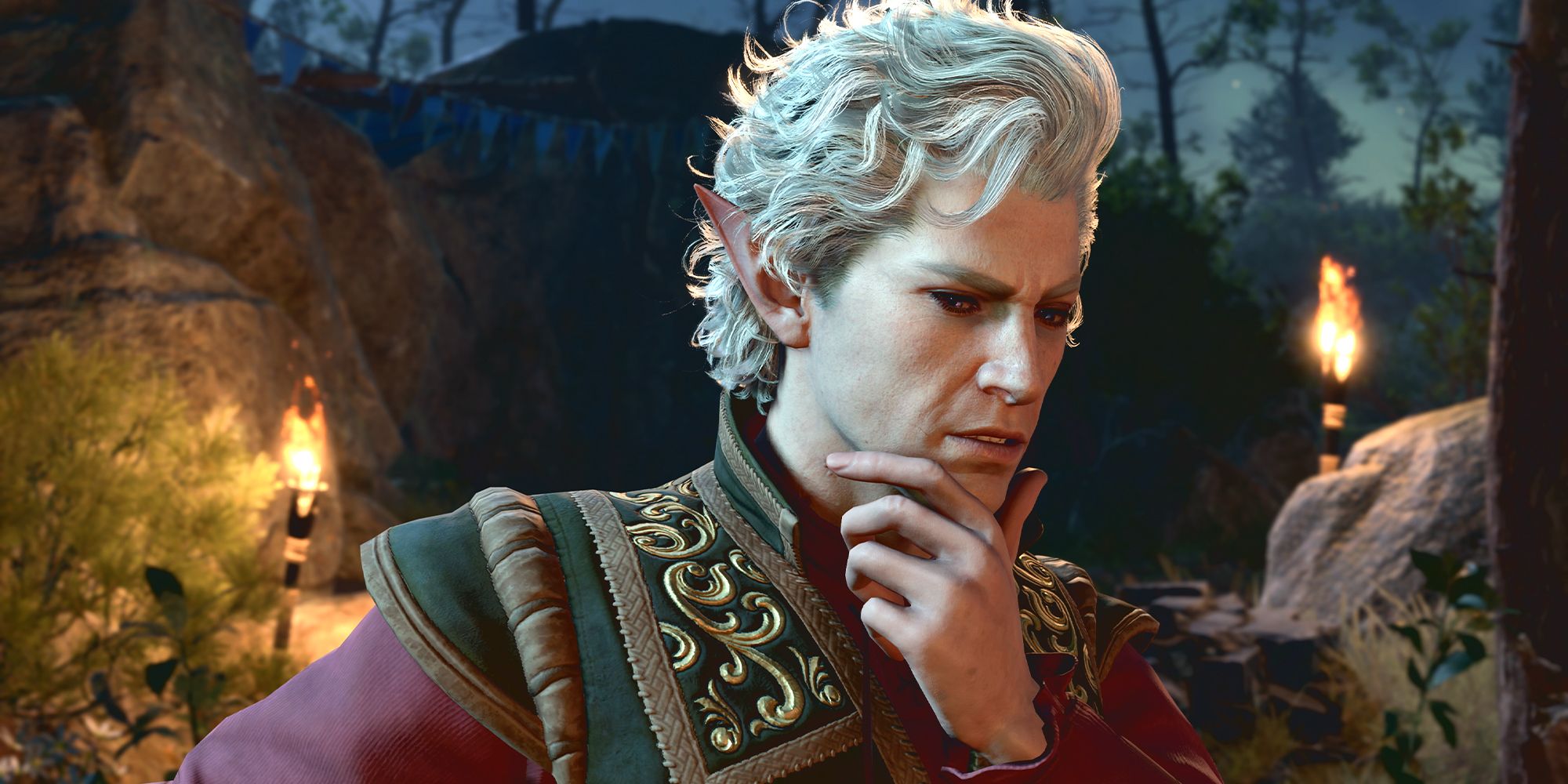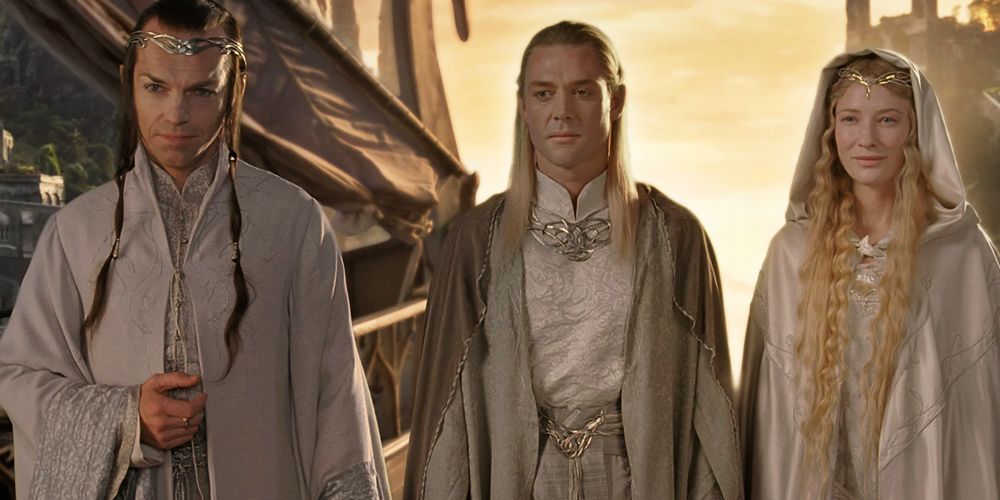Summary
- Elves are drastically overrepresented in the romance options in RPGs, even in modern games like Baldur's Gate III.
- Modern fantasy elves trace their lineage back to Tolkien and his predecessors, who wanted their elves to feel like otherworldly beings while still adhering to strict traditional beauty standards.
- Fans of games like Dragon Age, Baldur's Gate, and D&D would happily romance less traditional options, but games seem hesitant to include them in the first place.
Video game romances have become ubiquitous to the point where they are an expected aspect of many different genres. The days of Mario receiving cake from Princess Peach are long gone and players want a more individual romantic experience in their games. Romance has especially become a staple of role playing games as a way for gamers to immerse themselves more fully into the world that their characters inhabit. The romance options are usually the characters that players talk about the most, come up with headcanons for, and build entire playthroughs around.
Gamers are as varied as the stars, so it can be a bit shocking at how little variation there is when it comes to video game romances. Fantasy role playing games in particular are shockingly bad at having a variety of love interests to, well, fall in love with. Even the beloved Baldur's Gate III has this issue, with half of the available love interests being some flavor of elf. This lack of variation can be found everywhere with very few exceptions, begging the question as to where this inclination comes from and why there seems to be such a resistance to letting players romance characters that fall outside the norm.
Elves Are Pretty, And People Like Pretty Things
The first thing that needs discussion and understanding is the development of the aesthetic of fantasy elves as modern audiences know them. Elves have been a part of human folklore for hundreds of thousands of years and have taken on many different forms over that time period. The Germanic elves were very similar to the idea of fantasy elves today; beings of supernatural beauty and power who seemed to occupy a realm unlike that of humans. Other early medieval sources relate them more to the modern idea of dwarves, tying them into craft skills and helpfulness, like Santa's elves. Elves in ancient stories are both protectors and creators of illness, with a lot of variation in between depending on the region and time period. Elves were conflated with demons in early Judaeo-Christian traditions, and the "light-elves" and "dark-elves" we see today are probably related to trying to distill Christian cosmology into pagan populations in the medieval era of Iceland. Elves were also blamed for illnesses or thought of as recollections of long-lost indigenous peoples, explanations made for ruins that were outside of dark age technology to rebuild or reproduce.
The modern fantasy elves that most gamers think of in Dungeons & Dragons or in games like Baldur's Gate or Dragon Age are more connected to the elves that J. R. R. Tolkien wrote about in Lord of the Rings. But this modern elven conception was becoming more popular in the even earlier works of Lord Dunsany and Poul Anderson, who worked more with the Norse style of elves as seen in the Prose Edda. While much of Tolkien's reimagining of elves is incredibly well-known to the point of being ubiquitous, it is important to understand the linguistic and cultural changes that came with this interpretation.
Tolkien's seminal work changed fantasy material going forward and took an incredibly ancient concept in the elves and created something incredibly modern. While calling The Lord of the Rings recent may seem odd as the series was written in the 50s, elves were relatively indistinguishable from fairies at this point and Tolkien's choice of "elf" over "fairy" was entirely based around his linguistic background. Fairy is more French while Elf is more Anglo-Saxon, which ties back to Tolkien's desire to envision them as the tall, beautiful beings of impossible bearing. This almost makes them like vampires in many ways (which means Astarion is double-dipping), immortal and untouchable but still youthful and alluring, so it makes sense that many people would want to romance them in media, just as Aragorn and Arwen have a romantic plot in The Lord of the Rings. Even the movie versions of The Hobbit couldn't resist pairing up one of the Durin princes with an elf, despite the well-known grudge between their species. They become something of a default for players who want a romance storyline but don't want to get too adventurous. It is a safe bet that someone out there is going to want to be in a relationship with an immortally beautiful lover, but it does leave other fantasy species in the dust while making them more mundane.
Elves Don't Challenge Beauty Standards
In Baldur's Gate III, there are eight different romance options. Four of them are some flavor of elf, four of them are human or part-human, and only one is fully neither elf nor human. In the original Baldur's Gate II, three of the four original love interests are elves with Anomen as the only full human. In the Dragon Age series, the majority of the love interests are human and elves, with the horned Qunari Iron Bull standing tall as the only one not to fit into either category. Even in smaller game series, like Pillars of Eternity, there is an inherent lean toward elves and humans above any other type of love interest, and it all truly comes down to a lack of desire to experiment with the options given to players.
Baldur's Gate III is an incredibly expansive and intense game that is rightfully praised for being as impressive as it is, but it is curious that there are no recruitable companions that aren't basically standard humanoids outside of the githyanki Lae'zel. This points to a certain lack of experimental spirit among fantasy creators. There are plenty of people who want to romance dwarves and half-orcs, the sheer disappointment that Varric was unromancable back in Dragon Age II speaks to that point quite clearly. And that's not to mention the D&D community's insatiable love for tieflings. The main problem is that these other species do not exist within the more common idea of beauty that elves manage to slot into quite well because it's their whole thing. They're different without being too different. The Enhanced Edition of Baldur's Gate added a few more interesting options for players like the half-orc Dorn Il-Khan, but it still seems as though studios are too shy to let players try some romances that are a little more outside the conventional box.



